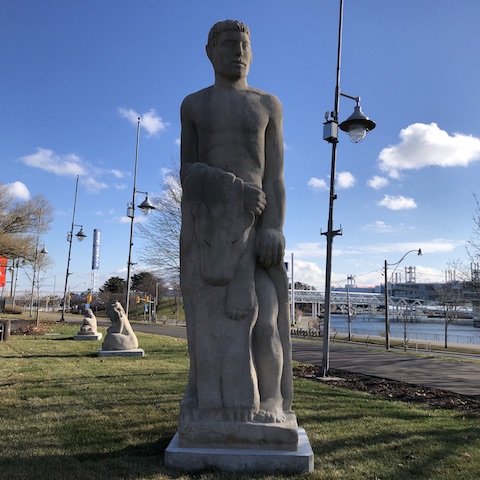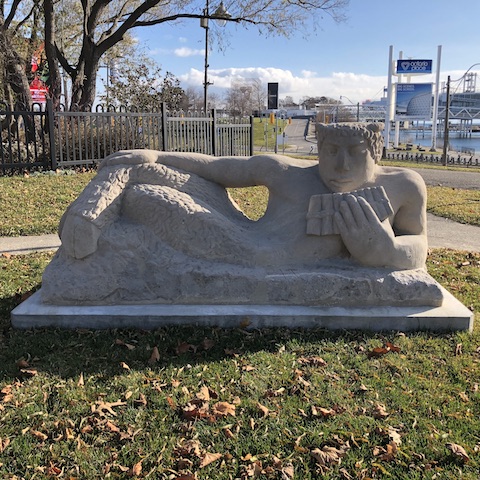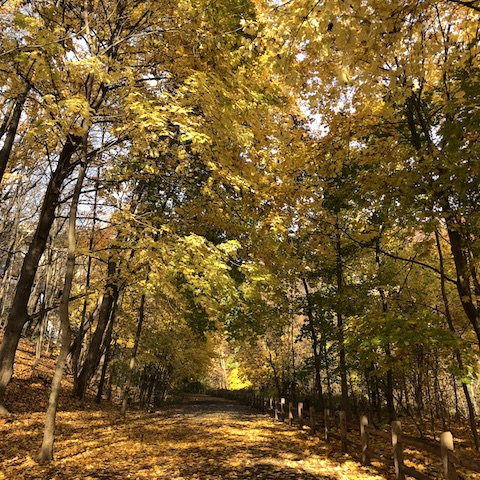This week I was going to write about my visit to Vatican City in March. Then I had a wonderful bike and hike excursion on Sunday that changed my mind. Nature wins! There will be a Vatican City blog post in due course, but it joins a long queue of things to write about.
Spring Hike
I set out for High Park on a beautiful, sunny and mild morning (12C or 54F). I rode my bike on the Waterfront Trail for about 45 minutes. Although I passed many scenic spots and landmarks along the shore of Lake Ontario, I made no stop until I reached the south end of High Park. From here, I started my hike along the lower trail that runs along Grenadier Pond.

I saw two hawks, red cardinals, robins, common grackles and chickadees among the trees, as well as ducks, geese, swans and turtles in Grenadier Pond.

A beaver dam reminded me of my beaver sighting at the end of March when I saw a beaver chewing on a small tree trunk. It is common to see beaver dams in the wetlands around here but to see a beaver foraging on land at daytime is rare.

After reaching the end of the lower trail, I zigzagged my way to the upper trails. I love the magnificent tall trees that line these trails. They look bare in early April and will be green and leafy in the coming weeks. The small trees are already showing small green leaves.

Another section on the upper trails has trees with lighter trunks. I walked for a long time and just came across squirrels and birds along the way. What’s not in my picture is the beautiful bird songs that I heard.

Eventually I made my way down to the Maple Leaf Garden located at the bottom of Cherry Hill. This garden was officially opened by Queen Elizabeth during her visit to Toronto in 1958. In a few weeks and through to Fall, it will turn into an impressive floral display that is in the shape of a giant maple leaf.

I hiked up the hill and was delighted to see a carpet of pretty puschkinia and daffodils. Puschkinia flowers have delicate white petals with blue stripes. They compliment the cheery yellow daffodils.


I hiked down the steep hill towards Grenadier Pond and enjoyed the beautiful surroundings. In a few weeks, the flowering of the Sakura trees (cherry blossoms) will be spectacular here.

One last look at the marsh in Grenadier Pond before I returned to where I left my bike and cycled home.

It was a gorgeous day and a wonderful hike. I did 45 minutes cycling + 2 hours hiking + 45 minutes cycling for a total of 3.5 hours outdoors. This excursion made me a very happy explorer!
Solar Eclipse
On Monday April 8 at 3:19 p.m. I watched the rare total solar eclipse in Toronto. The sun rays were blocked and the surrounding landscape turned dark for a few minutes; dark enough for the street lights to turn on. After the eclipse was over, it was sunny again.
Link-Up
Please note that there will be a link-up on April 19 and no link-up on April 26 and May 3 as I will take a blogging break. I will repeat this announcement next week.
I’d love for you to share your week’s highlights and/ or public art from around the world in the Comments or Weekend Coffee Share link-up #160 below.
Copyright © 2024 natalietheexplorer.home.blog – All rights reserved.


















































































































